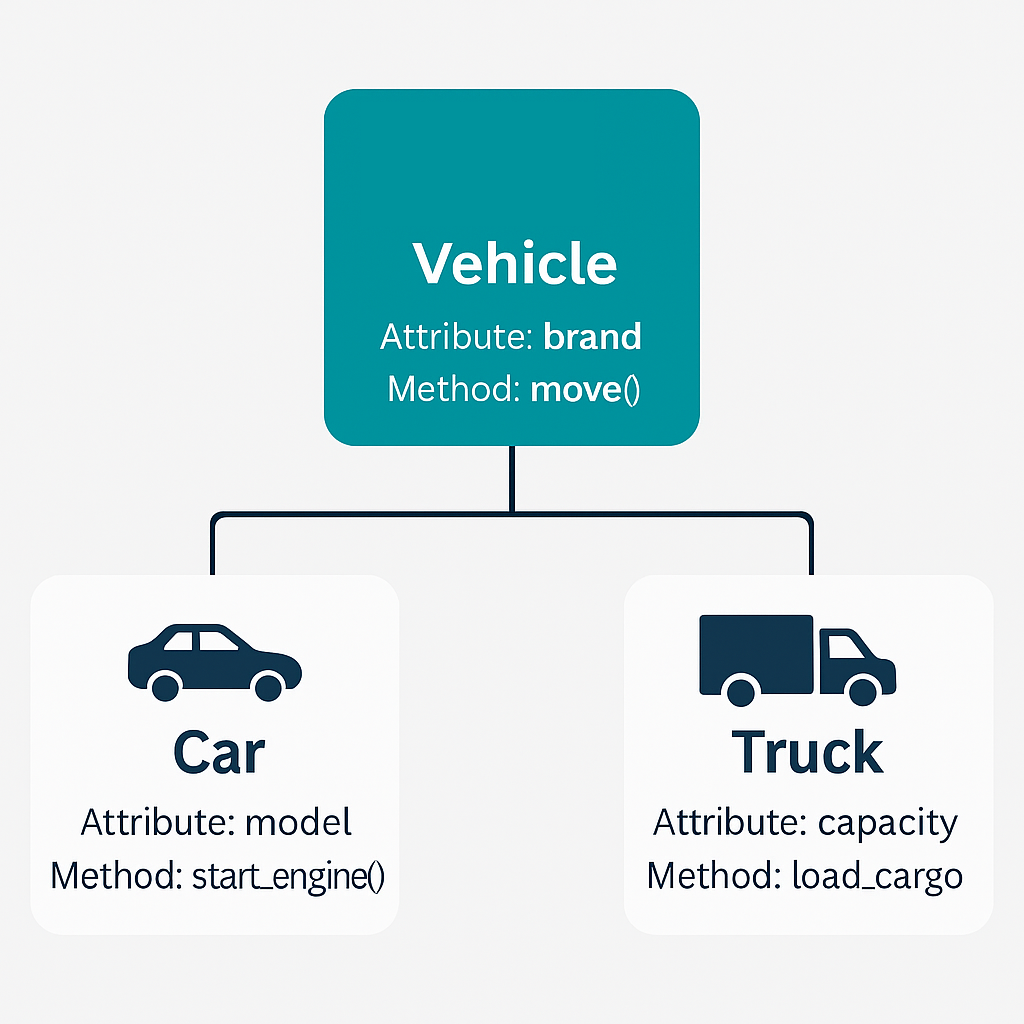| LM | Inheritance |
Inheritance
Inheritance is a powerful concept in object-oriented programming that allows a new class (called a child class or subclass) to inherit attributes and methods from an existing class (called a parent class or base class).
With inheritance, you can create a hierarchy of classes that share common functionality, and you can add or override behaviors in child classes.
Example: Vehicle, Car, and Truck

Image concept and AI prompt: Spaska Forteva — Generated with ChatGPT/DALL·E
Let’s start with a general Vehicle class, and then create two subclasses: Car and Truck.
class Vehicle:
def __init__(self, brand):
self.brand = brand
def move(self):
print(f"The {self.brand} vehicle is moving.")
class Car(Vehicle):
def __init__(self, brand, model):
super().__init__(brand)
self.model = model
def start_engine(self):
print(f"The {self.brand} {self.model}'s engine has started.")
class Truck(Vehicle):
def __init__(self, brand, capacity):
super().__init__(brand)
self.capacity = capacity
def load_cargo(self):
print(f"The {self.brand} truck is loading {self.capacity} tons of cargo.")
Usage
my_car = Car("Toyota", "Corolla")
my_truck = Truck("Mercedes", 10)
my_car.move()
my_car.start_engine()
my_truck.move()
my_truck.load_cargo()
Output
- The Toyota vehicle is moving.
- The Toyota Corolla’s engine has started.
- The Mercedes vehicle is moving.
- The Mercedes truck is loading 10 tons of cargo.
Summary
- Inheritance allows you to reuse code and create logical relationships between classes.
- Use super() to call the parent class’s constructor or methods.
- Child classes can add new behaviors or override existing ones.
